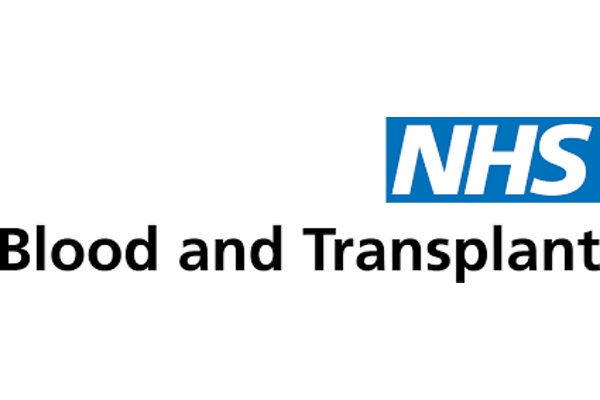New Liver Offering Scheme Proposed

Response by Martine Walmsley, PSC Support, 11 March 2015:
Transplant benefit based offering system with real-time shadow offering, and continuous monitoring once implemented.
The FTWU has recommended the introduction of a Transplant Benefit based offering sequence that predicts fewer deaths on the waiting list and more life years gained compared to the current system of organ allocation a.
While PSC Support agrees that Transplant Benefit is the optimum model to use in principle, using time from transplant to the earlier of patient death or graft failure, up to five years post-transplant to estimate survival doesn’t truly reflect the benefit of transplant to recipients. Capping survival at five years in effect diminishes the benefits for younger patients as it underestimates the gain in life years by predicting lifetime gain over 5 years, as opposed to the total lifetime gain. Paediatric and small adult patients benefit from accessing small adult livers as a national priority in the current system. However, young adults must compete directly with all other adult patients. In the proposed model, there is no recognition that a death in a younger patient is associated with a greater number of expected years of life lost compared with the death of an older adult patient. There is also no recognition that longer periods waiting has an impact on younger patients’ prospects, such as career and family, and contribution to society compared with older adult patients. Younger patients have not yet had the chance to live their lives and consideration should be given to how the cohort of younger waiting list patients is affected by rules applied to calculate their benefit.
UK data show that patients transplanted for autoimmune liver disease have longer life expectancies than other disease groups b. However, truncating outcomes at five years underestimates the lifetime benefits accrued for such patients. While PSC Support favours the Transplant Benefit model, consideration of these comments in allocation would benefit a new system.
Gaining life-years and reducing deaths provides a collective patient benefit but focussing on short term gains underestimates the potential benefit of liver transplantation over patients’ lifetimes. Hence, in saving lives, the reach of liver transplantation could be unintentionally reduced and narrowed.
PSC Support has concerns about the predictions that less young people, less patients with cancer, and less primary sclerosing cholangitis (PSC) patients will receive organs in the first twelve months of being on the list, as well as serious concerns about the extended waiting times for PSC patients. The statistical modelling is unable to estimate the mean waiting time for PSC patients, and specifies the median waiting time as ‘over 305’ days. PSC has no curative treatment and for a PSC patient on the Waiting List, a transplant is their one and only chance of survival, as there are no alternatives or ways to slow disease progression. Furthermore, over time, PSC patients have an increased risk of cholangiocarcinoma c and hepatocellular carcinoma d making longer waiting times concerning because of the extended exposure to these risks.
There is no robust prognostic model for PSC, due to its unpredictable course, increased risk of malignancy over time and the existence of subgroups of patients e. It is difficult to be confident that the statistical modelling can encompass the complexities of such a poorly understood disease, and so the recommendations of shadowing and monitoring are vital.
A transparent, statistically calculated offering sequence, while might reduce deaths and increase life years, risks inhibiting innovation. There should be room within the new allocation system for innovation and development, subject to pre-agreed protocol alterations.
There should be flexibility in the model to respond to advances in medical treatments. For example, increased use of new, effective HCV drugs will change the pattern of waiting list registration aetiology. Listing and allocation criteria should be continuously reviewed and revised when necessary.
PSC Support agrees that Transplant Benefit model is the best model to use but has concerns that the utility is assessed at five years post transplant. PSC Support strongly supports the recommendations to undertake both real time shadow donor offering and to undertake continuous monitoring once a new system is implemented in order to identify and address any unintended consequences such as disadvantaged cohorts of patients, or factors affecting accept/decline rates at centres, with the following provisions:
- There are opportunities to regularly monitor and review the impact from matters arising from the shadowing.
- There are at least three checkpoints for modifications, with patient involvement, over the first five years of running, scheduled prior to implementation.
- Consideration is given to assessing the effects of the Transplant Benefit model on younger patients.
Proportional Allocation for Variant Syndomes
Patients with a low UKELD Variant Syndrome (VS) will be allocated organs in proportion to their annual percentage of the total elective transplant registrant pool under the proposals and improved, auditable, definitions of low UKELD Variant Syndrome cases should be introduced.
The addition of extra UKELD points for some disadvantaged categories of patient was originally considered along with ‘proportional allocation’ but would have required further modelling by NHSBT (see LAG 14(8)). The additional modelling has not yet been seen to make an informed decision about how best to deal with VS. The addition of extra UKELD points should not be discounted.
By prioritising patients with a poor quality of life alone as an indication for transplant, no consideration is being given to the quality of life in patients who qualify for a liver transplant with a low prognostic score yet also have a poor quality of life. Patients qualifying on quality of life alone as an indication for transplant will be prioritised over time, yet patients with a similarly low quality of life but mild liver impairment (ie a qualifying but low liver prognostic score) only move up the offering sequence when their disease severity worsens, without any credit for the poor quality of life they experience.
PSC Support cannot yet support proportional allocation as a way of allocating organs to the VS group. Further consideration should be given to allocation options for this important group of patients as well as improved, auditable definitions of VS.
Impact of Additional Parameters within the Models
The impact of additional parameters within the models, such as cold ischaemic time (CIT), is required as is the impact of alternative DBD/DCD organ distribution (local, regional, contiguous zones).
PSC Support supports the recommendation to identify and measure additional parameters within the models.
Unit based correction factors for some pathology tests
Unit based correction factors for some pathology tests will be required for any national liver transplant allocation scheme.
PSC Support supports this recommendation.
References
a Lancet. Tackling liver disease in the UK: a Lancet Commission 2014 Nov 29;384(9958):1902
b Barber, K. et al., (2007). Life expectancy of adult liver allograft recipients in the UK. Gut 2007;56:279-82.
c Broomé, U. et al. (1995), Primary sclerosing cholangitis and ulcerative colitis: Evidence for increased neoplastic potential. Hepatology, 22: 1404–1408.
d Khan, S.A. et al. (2012), Guidelines for the diagnosis and treatment of cholangiocarcinoma: an update. Gut; 61:1657–1669
e Hirschfield GM, et al. (2013), Primary sclerosing cholangitis. Lancet. 2013; 382:1587-1599.
